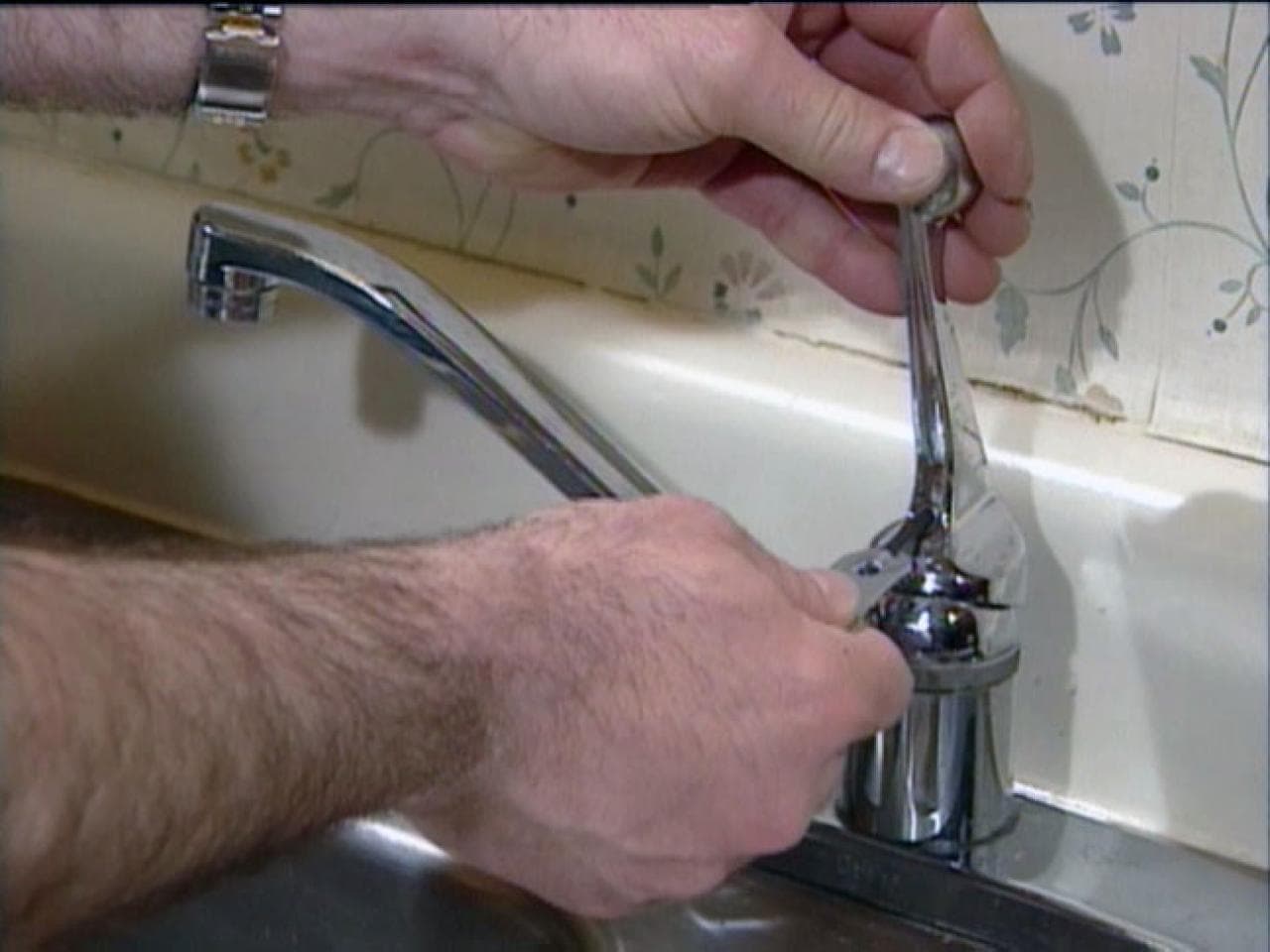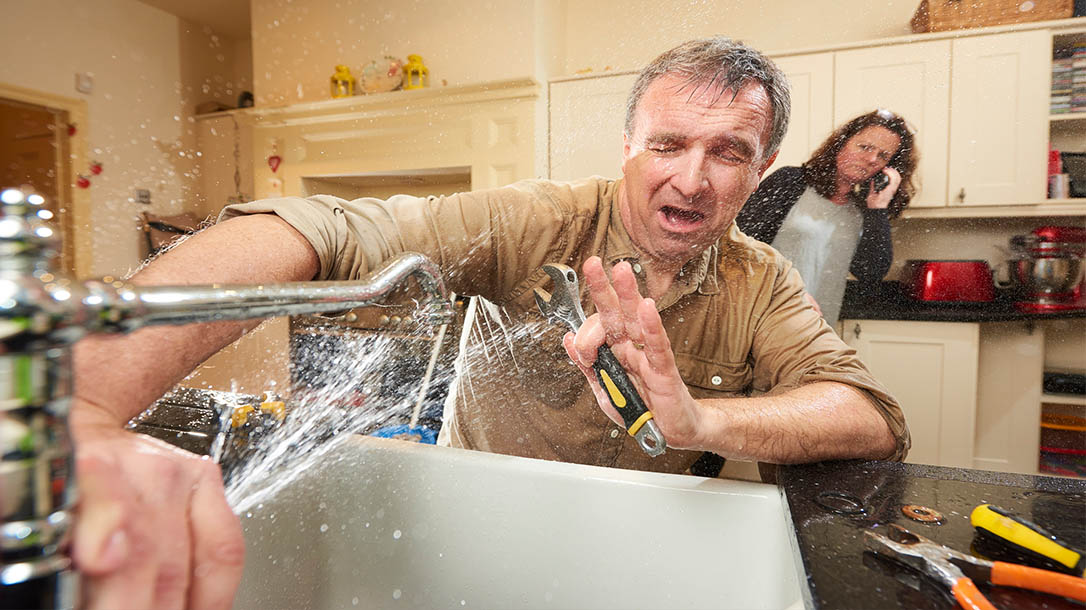My Reasons Behind Resolving a Broken Faucet
My Reasons Behind Resolving a Broken Faucet
Blog Article
We've stumbled upon this great article on Leaky Faucets: Why They Happen & What to Do About Them below on the internet and decided it made perfect sense to talk about it with you over here.

Trickling taps could seem like a small trouble, but their impact goes beyond simply the aggravation of the audio. From wasting water to incurring unneeded financial costs and health threats, neglecting a dripping tap can cause different consequences. In this write-up, we'll explore why it's essential to resolve this typical household problem promptly and properly.
Waste of Water
Environmental Effect
Trickling faucets add considerably to water waste. According to the Environmental Protection Agency (EPA), a single tap trickling at one drip per second can lose greater than 3,000 gallons of water each year. This not just strains water resources however additionally influences communities and wild animals based on them.
Financial Prices
Raised Water Bills
Beyond the ecological influence, trickling taps can blow up water costs considerably. The gathered wastage over time translates into higher utility expenses, which can have been stayed clear of with prompt fixings.
Possible Residential Or Commercial Property Damage
Furthermore, prolonged dripping can bring about harm to components and surfaces surrounding the faucet. Water accumulation can create discoloration, rust, and even architectural problems if left unattended, causing extra repair work costs.
Wellness Issues
Mold and Mildew Development
The continuous existence of moisture from a dripping faucet creates a suitable environment for mold and mold growth. These fungis not just endanger indoor air high quality yet also position health and wellness threats, specifically for people with respiratory system problems or allergies.
Waterborne Diseases
Stationary water in trickling taps can come to be a breeding place for microorganisms and various other microorganisms, boosting the danger of waterborne diseases. Impurities such as Legionella microorganisms prosper in stagnant water, potentially bring about severe health problems when ingested or breathed in.
DIY vs. Professional Fixing
Benefits and drawbacks of DIY Fixing
While some may try to repair a dripping faucet themselves, do it yourself repair work feature their own collection of challenges. Without appropriate expertise and tools, DIY efforts can exacerbate the problem or lead to incomplete repair services, lengthening the problem.
Benefits of Employing a Specialist Plumber
Hiring a specialist plumber ensures that the underlying reason for the leaking faucet is attended to properly. Plumbers possess the knowledge and devices to diagnose and repair tap concerns effectively, saving time and reducing the risk of more damages.
Step-by-Step Guide to Repairing a Dripping Faucet
Devices Needed
Before trying to deal with a leaking faucet, gather the essential devices, including an adjustable wrench, screwdrivers, replacement components (such as washing machines or cartridges), and plumber's tape.
Common Faucet Issues and Their Solutions
Determine the type of tap and the certain issue creating the drip. Common troubles include damaged washing machines, corroded shutoff seats, or malfunctioning O-rings. Refer to maker guidelines or online tutorials for detailed advice on repair work.
Safety nets
Normal Maintenance Tips
To prevent leaking taps, do regular upkeep such as cleansing aerators, inspecting for leaks, and replacing worn-out parts quickly. Furthermore, think about setting up water-saving gadgets or upgrading to much more efficient fixtures.
Importance of Prompt Repairs
Addressing trickling taps as soon as they're discovered prevents more water wastefulness and prospective damage, inevitably saving both water and cash over time.
Impact on Home Value
Perception of Well-Maintained Home
Maintaining a building in good condition, consisting of attending to maintenance issues like trickling taps, boosts its regarded value and desirability amongst prospective buyers or tenants.
Impact on Resale Value
Properties with well-kept plumbing fixtures, including taps, command greater resale values in the real estate market. Attending to trickling faucets can contribute to a favorable impression during residential property inspections and settlements.
Environmental Duty
Specific Payment to Conservation
Taking duty for repairing leaking taps straightens with more comprehensive efforts toward water conservation and environmental sustainability. Every individual's activities collectively make a considerable effect on protecting valuable sources.
Lasting Living Practices
By focusing on timely repair work and adopting water-saving habits, people add to sustainable living practices that profit both existing and future generations.
Conclusion
Addressing a leaking faucet surpasses simple convenience; it's an important action toward preserving water, minimizing financial prices, and protecting wellness and building. Whether via DIY repair services or professional help, taking action to take care of trickling faucets is a little yet impactful means to promote accountable stewardship of sources and add to a healthier, much more lasting future.
How to Fix a Dripping or Leaky Faucet
A leaking faucet is one of the most common problems that homeowners encounter, but it being commonplace doesn’t make it any less annoying. The constant drip drip drip of a leaking bathtub faucet, showerhead, or sink tap can disturb your home’s serenity. Left neglected, a dripping faucet can also result in higher water bills and discoloration or mold growth in your sink or plumbing fixtures.
Fortunately, you don’t have to be a trained plumber to know how to stop a dripping faucet. With some basic tools, replacement parts, and a little patience, leaky faucet repair is a breeze. In this article, we’ll explain what causes dripping faucets and how you can fix them.
What Causes a Leaking Faucet?
Kitchen and bathroom faucets come in all manner of designs, but most involve some combination of valves, O-rings, seals, and washers. The O-ring is usually the weakest link, but any one of these pieces can wear down over time. Heat, moisture, temperature fluctuations, minerals, mold, and movement can contribute to warping and corrosion, breaking the watertight seal. This just comes with the territory of being a homeowner. Everything is always subject to wear and tear, and some component parts of your appliances and fixtures need to be replaced on occasion. At least replacement O-rings are cheap!
More rarely, dripping faucets can be a symptom of excessively high water pressure. Were this the case in your home, you would probably notice that the leak is not isolated to one faucet. Water pressure issues are harder to resolve on your own. We recommend contacting a professional plumber if you suspect your water pressure is too high.
How to Fix a Dripping Faucet
Pipe wrench or monkey wrench Allen wrench set Screwdrivers Old towel or rag Shut off the water.
Before you do anything, you need to turn off the water to keep from drenching your kitchen or bathroom. You should find a valve under the sink and against the wall. Once you’ve turned this valve, try turning the faucet on to confirm that the water source has been cut off.
If you can’t locate your local valve for the faucet you’re working on, you can always shut off the water to the house at the main valve. Of course, this will prohibit anyone from using the sinks, showers, or toilets while you’re working on the faucet that’s giving you trouble.
Plug or block the drain.
You’ll be disassembling the faucet and removing some small bits of hardware. Plug the drain with a stopper or rag to avoid the possibility of a small screw falling into your P-trap.
Take apart the faucet assembly.
There are several varieties of kitchen and bathroom faucets, each with its own manner of assembly. For detailed instructions on how to disassemble your faucet, you can refer to the fixture’s manual or contact the manufacturer. If you know whether you have a ball, disc, cartridge, or compression faucet, you can find detailed schematics online.
In general, you need to begin by removing the faucet handles. You might notice a small screw that you’ll need to remove with a screwdriver or Allen wrench. If you don’t see any visible securing hardware, it’s likely hidden under a decorative cap that can be unscrewed or popped off with flathead screwdriver.
Remove each piece methodically, consulting a schematic when necessary. Take notes or arrange the pieces in such a way to make it easier to correctly reassemble the faucet later.
Remove the cartridge.
Once you’ve removed the handles and securing hardware, you should be able to remove the valve cartridge or stem. Some cartridges will slide right out. Other faucet models will require you to loosen a nut with a pipe wrench before you can remove the valve stem.
Examine the exposed hardware.
With the cartridge or stem removed, inspect the component parts. Check the rubber O-rings for wear and tear. Also examine the seat washer for corrosion or other damage. These pieces are usually the responsible parties for a dripping faucet, but it’s worth inspecting the other component parts while you have the faucet disassembled.
Find replacement parts.
Once you’ve identified which faucet component has failed, find an identical replacement. Your local hardware store should have O-rings, seat washers, and other standard components in stock. If you have a luxury or uncommon faucet, you may have to contact the manufacturer for a replacement part.
It’s a good idea to take your old parts with you to the hardware store so you can compare them with the store’s inventory and be sure you’re purchasing the correct replacement.
Reassemble the faucet.
With your new parts in hand, reconstruct the faucet and handles. Don’t be tempted to overtighten screws or nuts. You might think this could create a better seal, but it can instead damage or bend a delicate part of the assembly and create a new problem for you.
Turn on the water and test the faucet.
The only thing left to do is test your work. Unplug the sink, turn the water back on, and try the faucet. Congratulate yourself on a job well done!
https://www.libertyhomeguard.com/how-to-fix-a-dripping-or-leaky-faucet/

I recently found that page on Should I Repair or Replace a Leaky Faucet? when doing a lookup on the web. Are you aware of somebody who is serious about the topic? Why not share it. Thank you for being here. Revisit us soon.
Report this page